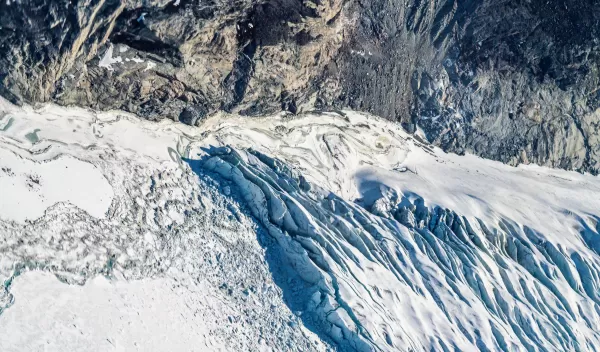
A new film on baffling Baffin Bay
A new NSF-supported documentary follows the Baffin Bay Deglacial Experiment team on its journey to investigate what happened to the Greenland Ice Sheet over 15,000 years ago
Although scientists know that the Earth has seen major climate changes from the geologic record, they are still discovering how those changes affect the environment.
For instance, over 15,000 years ago, Earth's temperature rose, triggering a deglaciation period that caused the western side of the Greenland Ice Sheet to suddenly melt and vanish. A team of scientists with the Baffin Bay Deglacial Experiment are on a mission to figure out the timeline and mechanics of this event. The team's efforts were recently featured in an award-winning documentary film.
"To a lot of people, it's just mud, right?" says Brendan Reilly in the film as he stands in front of a wall of sediment cores – long pillars of dirt drilled from the bottom of the ocean. "I would say not to just a lot of people, to almost everybody, it's just mud," says Reilly, principal investigator and co-chief scientist on the project.
Unassuming as it looks, the massive collection of over 19,000 sediment cores at Columbia University's Lamont-Doherty Earth Observatory was collected from the ocean floor to help researchers investigate the Earth's past climate. Every layer of a sediment core holds vital information, like tiny fossils or sediment composition, which gives the team insight into Earth's climate history.
Filmmaker Georg Koszulinski and his team created the award-winning documentary following the Baffin Bay Deglacial Experiment team as it searches for information. The film captures the team's journey from drilling ocean floor sediment cores to using those cores to investigate what happened to the Greenland Ice Sheet.
As the planet gets warmer, the team hopes to apply what they learn to better understand the current situation and help forecast future impacts.
